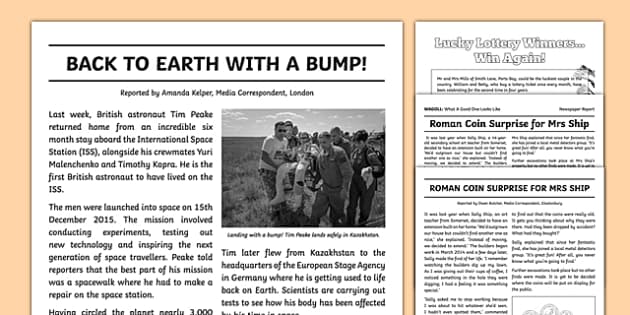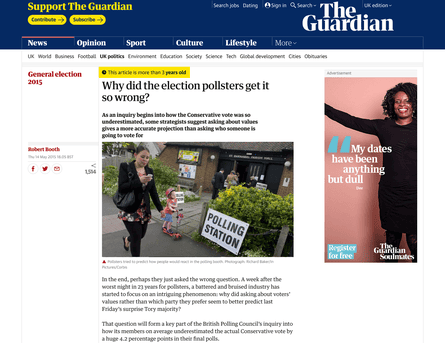The Basic Principles Of News Articles
The Basic Principles Of News Articles
Blog Article
Rumored Buzz on News Articles
Table of ContentsOur News Articles DiariesThe 6-Second Trick For News ArticlesThe 5-Minute Rule for News ArticlesGetting The News Articles To WorkNews Articles - The Facts
Great knowledge of different topics offers pupils an affordable edge over their peers. Despite the fact that digital and social networks are easily obtainable, we must not neglect just how crucial it is to read the papers. Parents should try and instill the behavior of reviewing a paper as a daily regimen to continue the tradition of the adored print medium.Information stories likewise include at the very least one of the following crucial features relative to the designated target market: closeness, importance, timeliness, human passion, curiosity, or consequence.
Within these limits, news stories also intend to be detailed. Amongst the bigger and a lot more reputable newspapers, justness and equilibrium is a significant aspect in providing information.
Newspapers with an international target market, for example, tend to make use of a much more formal style of composing. News Articles.; common design guides consist of the and the United States Information Style Publication.
Our News Articles PDFs
As a rule, reporters will not use a lengthy word when a brief one will certainly do. They utilize subject-verb-object building and construction and vivid, active prose (see Grammar). They offer narratives, examples and metaphors, and they rarely depend on generalizations or abstract concepts. News authors try to prevent using the same word extra than once in a paragraph (often called an "resemble" or "word mirror").
Headlines in some cases leave out the subject (e.g., "Leaps From Watercraft, Catches in Wheel") or verb (e.g., "Cat woman lucky"). A subhead (also subhed, sub-headline, subheading, caption, deck or dek) can be either a secondary title under the major heading, or the heading of a subsection of the post. It is a heading that precedes the primary text, or a group of paragraphs of the main message.

Additional billboards of any of these kinds might appear later on in the write-up (specifically on succeeding pages) to entice more analysis. Such signboards are likewise made use of as reminders to the write-up in various other sections of the magazine or website, or as advertisements for the piece in other magazine or websites. Typical framework with title, redirected here lead paragraph (recap in strong), other paragraphs (information) and get in touch with information.

Example of a hard-lead paragraph NASA is suggesting one more area task. The firm's spending plan demand, revealed today, included a strategy to send one more mission to the Moon. This time the firm wants to develop a lasting center as a jumping-off place for various other room journeys. The spending plan demands approximately $10 billion for the job.
The NASA statement came as the agency requested $10 billion of appropriations for the job. An "off-lead" is the second most essential front web page news of the day. The off-lead shows up either in the top left edge, or straight below the lead on the. To "hide the lead" is to begin the short article with history details or details of second importance to sites the viewers, requiring them to find out more deeply into an article than they need to need to in order to discover the important factors.
Some Known Incorrect Statements About News Articles
Common use is that one or 2 sentences each develop their very own paragraph. Journalists usually describe the organization or framework of a newspaper article as an upside down pyramid. The essential and most fascinating components of a tale are placed at the start, with sustaining details following in order of reducing relevance.
It allows people to check out a topic to just the deepness that their curiosity takes them, and without the imposition of details or subtleties that they could take into consideration irrelevant, but still making that details available to much more interested readers. The inverted pyramid structure additionally enables short articles to be trimmed to any type of approximate size throughout design, to suit click here to read the area available.
Some writers start their tales with the "1-2-3 lead", yet there are many type of lead offered. This style inevitably starts with a "Five Ws" opening up paragraph (as described above), followed by an indirect quote that offers to sustain a significant aspect of the initial paragraph, and after that a direct quote to support the indirect quote. [] A kicker can describe numerous points: The last tale current program; a "delighted" story to end the program.
Longer articles, such as publication cover articles and the items that lead the within sections of a paper, are understood as. Feature tales differ from straight information in numerous means.
News Articles Can Be Fun For Anyone
The journalist usually details interactions with interview topics, making the item much more personal. An attribute's initial paragraphs usually connect an intriguing moment or occasion, as in an "unscientific lead". From the particulars of an individual or episode, its view rapidly broadens to abstract principles regarding the story's topic. The area that signals what an attribute is about is called the or signboard.

The Editor's Tool kit: A Reference Overview for Beginners and Professionals (2001) Allan M. Siegal and William G. Connolly. The New York Times Guidebook of Design and Use: The Authorities Style Guide Made Use Of by the Writers and Editors of the Globe's Most Authoritative Newspaper (2002) M. L. Stein, Susan Paterno, and R.
Report this page